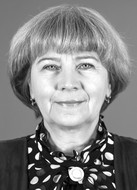Combined effects of natural factors on students' physical and psychomotor development in Russian Far North
Фотографии:
ˑ:
PhD, Associate Professor S.Kh. Mukhametgaliyeva1
PhD, Associate Professor V.I. Kuzmenko1
PhD, Associate Professor N.L. Ivanova2
1Elabuga Institute of Kazan Federal University, Elabuga
2Surgut branch of Tyumen Industrial University, Surgut
The study analyses the effects of natural factors on the students’ physical and psychomotor development in the Russian Far North and the relevant areas. Issues of the individual and public health agendas in harsh climatic conditions are always critical as the human life cannot be isolated from the living environment. Applied for the study purposes were the relevant theoretical (analysis, synthesis, classification) and empirical (tests, educational process monitoring, psycho-education and practice related literature, students’ academic performance, individual and collective experiences of the faculty etc.) research methods, plus the standard mathematical processing toolkit. Objective of the study was to highlight the key natural factors of combined effect on the students’ physical and mental progress in the Russian Far North; and identify the potential negative effects. Subject to the study were students of the Tyumen Industrial University Affiliate in Surgut city. The study data and analyses made it possible to list and rate the factors of influence on the students’ physical development, functional and psychomotor development rates in the Far North of Russia.
Keywords: students, northern natural and weather factors, physical development, psychomotor development, negative impacts.
References
- Aghajanyan N.A. Chelovek v usloviyakh Severa [Man in the North]. Moscow: Krug publ:, 1996.
- Bashkatova Yu.V., Karpin V.A. Obschaya kharakteristika funktsionalnykh sistem organizma cheloveka v usloviyakh Khanty-Mansiyskogo okruga – Yugry [General characteristics of functional systems of human body in conditions of KhMAR - Yugra]. Ekologiya cheloveka, 2014, no. 5, pp. 9-16.
- Zuevskaya T.V., Zuevskiy V.P., Ushakov V.P. et al. Klimaticheskie i ekologicheskie osnovy patologii cheloveka v Khanty-Mansiyskom avtonomnom okruge – Yugre [Climatic and ecological basics of human pathology in KhMAR - Yugra]. XIII Kongress 'Ekologiya i zdorovye cheloveka' [Proc. XIII Congress 'Ecology and human health'], 2008, vol. 1, pp. 159-163.
- Ivanova N.L. Vliyanie pogodnykh faktorov na studencheskuyu molodezh [Influence of weather factors on students]. Nauka i biznes: puti razvitiya, 2015, no. 9(51), pp. 5-7.
- Lubysheva L.I. Vserossiyskiy kompleks GTO kak faktor razvitiya fizkulturno-sportivnoy deyatelnosti vuza [Russian GTO complex as a factor in development of academic physical culture and sports activities]. Sb. nauch. prakt. konf. 'Fizicheskaya kultura, sport, turizm: nauch.-metod. soprovozhdenie' [Proc. sci.-pract. conf. "Physical culture, sports, tourism: scientific-methodological support'], 2014, pp. 184-189.
- Mizun Yu.G. Zdorovye na Severe [Health in the North]. Moscow: Ekologiya i zdorovye publ., 1997.
- Mizun Yu.G. Kosmos i zdorove. Kak uberech sebya i izbezhat bolezney [Space and health. How to protect yourself and be healthy]. Moscow: Veche, AST publ., 1998.
- Novikov V.S., Soroko S.I. Fiziologicheskie osnovy zhiznedeyatelnosti cheloveka v ekstremalnykh usloviyakh [Physiological basics of human life in extreme conditions]. St: Petersburg: Politekhnika-print publ., 2017..
- Solovyev V.S. Adaptatsiya cheloveka v usloviyakh Khanty-Mansiyskogo avtonomnogo okruga – Yugryi [Human adaptation in KhMAR - Yugra conditions]. Khanty-Mansiysk, 2010.
- Tsepko O.A. Osobennosti adaptatsii organizma studentov, prozhivayuschikh na territorii Srednego Priobya [Features of students' adaptation in Middle Ob area]. Mater. mezhdunar. nauchno-teh. internet-konferentsii ‘Fundamentalnye i prikladnye aspekty sozdaniya biosferosovmestimykh sistem’ [Proc. Intern. scie-technical Internet conference 'Biosphere-compatible system design: fundamental and applied aspects'], 2013, pp. 348-350.




 Журнал "THEORY AND PRACTICE
Журнал "THEORY AND PRACTICE